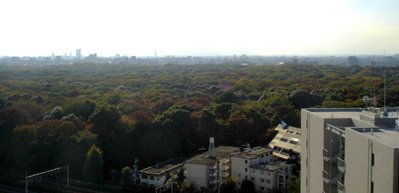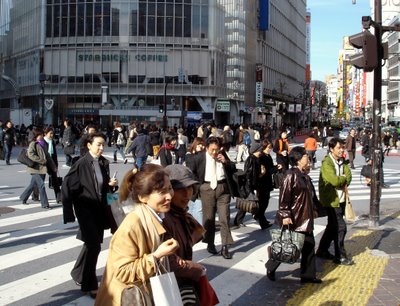
This week's featured building is the LDS temple here in Tokyo. Completed in 1980, it is one of only two such temples in Japan. The temple is about a ten-minute walk from our home. Next door to it is the meetinghouse where we attend regular Sunday meetings.

For those not familiar with LDS temples, these are buildings dedicated to our faith's most sacred rites, such as marriage. Closed off from the outside world, they provide a haven for learning and contemplation. I appreciate the special, calm spirit I feel there. It has been many years since Cindy and I were married (in the Washington D.C. temple) and regular temple visits have been part of our life. So it's great to have a temple so close at hand.
Like most structures here in Tokyo, where acreage is at such a premium, the temple takes advantage of vertical space. It is built on a lot just under half an acre, but has a floor area of over 50,000 square feet. Because of its location, it is not easy to get a good photo of the whole temple. From across the street, its spire overlooks the lower portion of Arusigawa Memorial Park, a beautiful spot in the middle of Minami Azabu.
In the dedicatory prayer for the temple, LDS president Spencer W. Kimball remembered its neighborhood: "O Lord, we pray Thee to bless and sanctify the grounds on which this Temple stands, and with it, the fences, the walks, paths, the trees, plants, flowers and shrubbery that grow in this area. May they blossom beautifully and be pleasant for all and a haven of peace and rest for holy meditation."












































